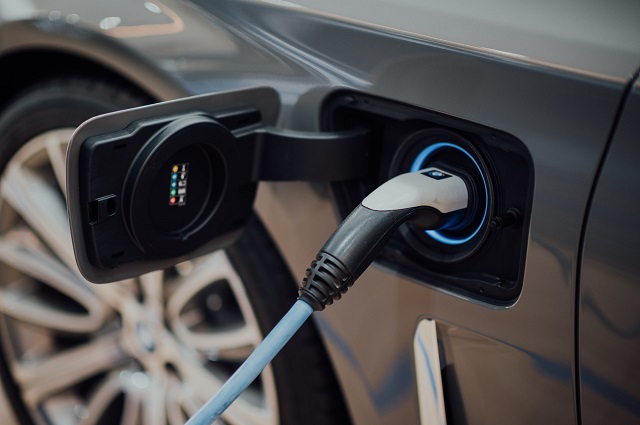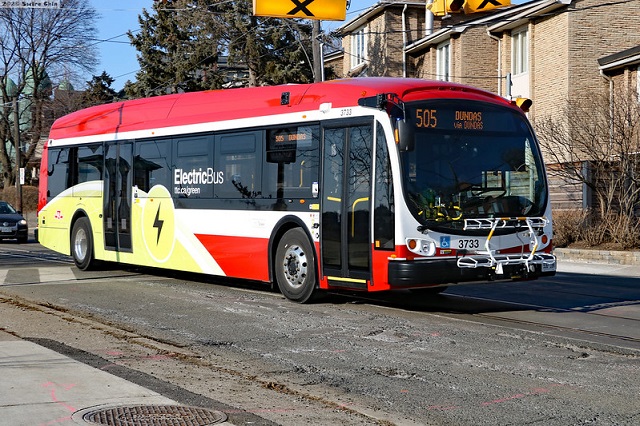
COVID-19 has affected almost all aspects of transportation.
For the public sector, economic shutdowns have gutted the tax revenue needed to buy and maintain government vehicle fleets. Perhaps no municipal entity has been hit harder than public transit agencies, which have seen ridership plummet by up to 97%. Some transit operators are close to bankruptcy, while some bus services may face permanent closure.
For the private sector, COVID-19 has increased interest in private vehicle use as consumers feel safer and more protected from the virus in cars than they do on public transit. Not only are people grabbing their keys instead of transit passes, but those who never had keys to begin with are now considering a vehicle purchase.
These are troubling trends that threaten the fundamental tenets of sustainable mobility: improved mass transit and reduced private vehicle use. Public transportation is fundamental for creating more efficient and sustainable cities, and cities should continue to prioritize public transit over private vehicles.
However, private vehicles are unlikely to ever disappear, and those which are purchased should be electric. Through the right policies and investments, local governments can encourage consumers to make the right choice while also expanding their own electric vehicle (EV) fleets and growing their economies.
4 Reasons to Invest in EVs Now
Given the issues posed by COVID-19, now is the perfect time for vehicle owners and operators to invest in EVs, especially electric buses. Accelerated electric vehicle adoption during the pandemic will:
1. Spur the Economy.
The International Labour Organization estimates more than 14 million workers have been adversely affected by the pandemic just in the United States and Europe. Procuring more electric vehicles and building infrastructure can immediately create jobs and spur sustained economic activity. The United States alone is projected to need 330,000 public charging outlets and a total of roughly $4.7 billion in EV infrastructure investment by 2025. Although job growth will likely come from sectors outside the rapidly automating vehicle manufacturing sector, several studies conclude that EVs will provide a net benefit to total job growth, with estimates noting up to 2 million new jobs by 2030 in the charging and maintenance sectors and elsewhere. There is no better investment to spur economic activity than one that requires large upfront investment and provides long-term cost savings.
2. Save Money.
Despite their large upfront costs, electric vehicles can have a cheaper total cost of ownership and save money in the long term. One recent study showed the ownership cost of e-taxis will be less than conventional taxis after as little as four years of use. Bloomberg estimated that e-buses started to produce a lower cost of ownership than diesel buses by 2018, assuming the bus drives at least 160 kilometers (about 100 miles) a day. These cost savings can help governments and companies build their emergency funds and weather operational deficits during times of crisis or low demand.
3. Create New Revenue Streams in Emergencies and Times of Low Demand.
There are additional uses and revenue streams associated with electric vehicles, especially those with big batteries, such as buses, delivery vehicles and municipal trucks. In times of crisis or low demand, heavy-duty electric vehicles (or an aggregated network of smaller batteries) can be used to provide stable electricity to hospitals and other essential services through vehicle-to-grid solutions. For example, in Virginia, Dominion Energy expects to replace 50 diesel buses with EVs by the end of 2020, extending to more than 1,000 vehicles by 2025 with state approval. When the plan is fully implemented, the batteries in the bus fleet could store up to 105 megawatt-hours of electricity – enough to power more than 10,000 homes. This builds on a pilot project led by the University of Delaware, where electric cars ended up generating more than $100 per car, per month.
4. Retain Local Air Quality Improvements.
Over the course of the COVID-19 shutdown, air pollution dropped by almost 60% in many cities. Electric vehicles have no tail-pipe emissions, emit less heat and produce less noise compared to conventional vehicles. Prioritizing electric vehicle adoption now would help retain air quality improvements and lower health risk in communities. These benefits can be further improved by using electric vehicles to improve renewable energy integration (for example, solar energy produced during the daytime can be stored in electric vehicles and used later by selling it back to the grid).

How Can Governments Support More EVs?
EVs – especially large, shared EVs, such as buses – are a great way to push the economy forward in the wake of COVID-19. While the approach may differ by region, there are three main steps that governments can take to support both public and private EV deployment.
1. Grow Charging Infrastructure.
Lack of charging infrastructure is a key barrier to scale EVs. Accelerating its deployment not only provides confidence to consumers in overcoming perceived range anxiety, it also creates the essential infrastructure linkage with the electricity grid. Smart charging infrastructure will also help in managing the electric load on the grid and use electric vehicles as energy storage resources. By focusing on the widespread deployment of public charging infrastructure and incentivizing workplace charging, this investment will have sustained positive outcomes.
2. Support EV Purchases in COVID-19 Relief Packages.
Whether from national governments or from international institutions, many cities and countries will likely be eligible for post-COVID-19 stimulus in the months to come. Governments should prioritize these funds towards actions which will create cascading economic growth in the short term, save money in the long term and provide environmental co-benefits. Purchasing electric vehicles, especially buses and other high-mileage shared vehicles, is one concrete way to achieve all three of these goals. Policymakers should craft stimulus packages that subsidize the purchase of electric vehicles and their corresponding charging infrastructure, such as Germany’s €15 billion stimulus package. This package aims to accelerate EV adoption by increasing subsidies on vehicle purchase, lowering taxes and scaling charging infrastructure.
3. Implement Emissions Standards and EV Mandates.
To assist the efforts to develop charging infrastructure and structure stimulus packages, policymakers should also put in place laws to solidify the long-term push to electrification. Worldwide, vehicle standards and mandates have proven to be effective policy tools to mitigate greenhouse gases for the transport sector and support EV adoption. In Mexico, for example, a vehicle efficiency standard reduced carbon dioxide emissions by an estimated 30 million tons from 2013-2017, improved the overall efficiency of the country’s vehicles by close to 11%, and set the stage for future EV adoption.
Zero-emission vehicle mandates have also proven effective in increasing EV purchases, as evident by successful programs in California and China. Such policies spur supply chains for clean vehicles and can bolster charging infrastructure plans and stimulus money, dramatically hastening the pace towards electrifying vehicle fleets.
Building Back Better with Electric Vehicles
EVs can help create a more environmentally and financially sustainable post-COVID-19 world. As Nobel Prize-winning economist Paul Romer once noted, “A crisis is a terrible thing to waste.” Despite the destructive and painful nature of the pandemic, it also offers a once-in-a-century opportunity to pause business-as-usual vehicle production and shift towards a clean, economical and electric future.
This blog was originally published on WRI’s Insights.
Vishant Kothari is Manager for Electric Vehicles-Grid Integration with the Global Electric Mobility team at WRI Ross Center for Sustainable Cities.
Ryan Sclar is a Research Associate for the Global Electric Mobility team at WRI Ross Center for Sustainable Cities.








